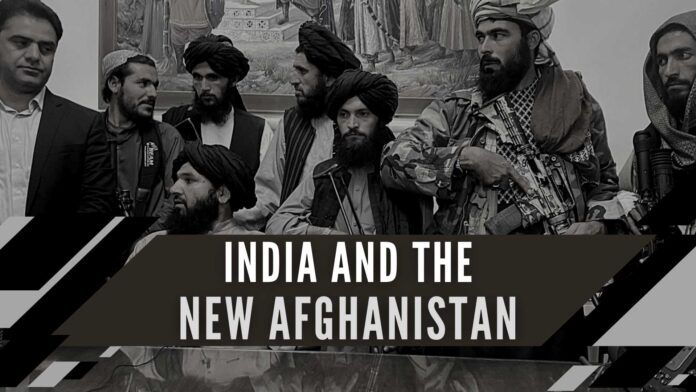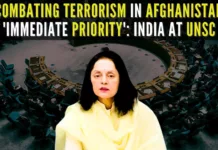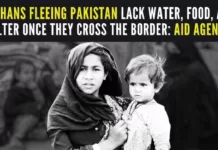
Afghanistan: Three concerns for India about Taliban 2.0
The return of the Taliban has brought new geoeconomic and geopolitical realities to our neighborhood and guarantees the continuation of the War on Terror, plausibly requiring India’s active role. Our compulsions are three-fold. One, while we are no trigger-happy cowboys, the ISI-backed and India-hating Haqqani faction is strongly entrenched in this Taliban dispensation and means more pin-pricks on our western front. Two, the Taliban’s sole agenda is Islam and lacks the vision and the ability to build Afghanistan’s social and health infrastructures, but its Mullah Baradar fraction appreciates India’s nation-building contributions there and seeks more of it, so offering us a new opportunity. And three, Afghanistan is at the intersection of China’s Silk Road and India’s dream road to central Asia ― this conflict of our interests versus those of China builds a common cause between QUAD and the newly formed AUKUS ― the NATO-type alliance of Australia, UK, and the US whose focus on the South China Sea will compel China to engage simultaneously on eastern as also western fronts, at a time when China’s economic model ― a fusion of Shakespearean Shylock with proto-industrialization era Europe’s mercantilism ― is very likely to abhor.
While the first issue above points to our weakness, the second issue can become the source of our strength. If the Taliban’s supposedly moderate faction wins in the ongoing jostling for power, then it will receive pinpricks from the extreme Jihadi elements, very much like the West Bank Palestinians are pitted against those in Gaza. Neither can eliminate the other and peace becomes a guaranteed casualty. Both the kinds of violence here, by outfits like the IS-K (Islamic State – Khorasan) to discredit the Taliban regime or intra-party rivalry by the likes of Haqqani network to embarrass Taliban’s supposedly moderate faction, will only distract Taliban from governance and restore its earlier role as the incubator of jihadi violence. That is inimical to the entire world.
But what if we help steer these supposedly semi-moderate Taliban’s to champion the cause of Pashtun nationalism as well? History has clearly left Afghanistan alone for good reasons ― it lacks arable land and other resources. Neither Alexander the “Great” (many of today’s Pashtuns are believed to be descendants of his soldiers who didn’t return), nor Chengis Khan and his Mongol hoards, or Taimur Lane for that matter, sought to conquer the Pashtuns or plunder their land. British India tried and divided the Pashtun population by drawing the Durand Line that was signed in 1893 by Abdur Rehman Khan, the then emir of Afghanistan[1]. Despite their esteem for the Emir as the founder of modern Afghanistan, many Pashtuns resent it and excepting him, Amir Habibullah Khan in 1905 and Sardar Mohammed Daud Khan in 1976, no Afghan leader or government, not even the earlier Taliban, have ever accepted it.
Barely a third of all Pashtuns thus live in Afghanistan, and the rest in Pakistan. Even if a staunchly Islamist but apparently benevolent Mullah Baradar’s faction captures the imagination of a third of the Pakistani Pashtuns by arousing Pashtun nationalism, it will become an unassailable champion of all Pashtuns, weaken the Durand Line, and thwart all Pakistani machinations on her northern border. True, Pakistani Pashtuns are a motley assortment of disparate groups, including TTP (Tehrik-i-Taliban Pakistan), PTM (Pashtun Tahafuz Movement), TLP (Tehreek-e-Labbaik Pakistan), NDM (The National Democratic Movement), ANP (Awami National Party), for instance, and many Pashtuns directly identify themselves with the mainstream parties like PTI (Pakistan Tehreek-e-Insaf), PML-N (Pakistan Muslim League – Nawaz Sharif) and PPP (Pakistan Peoples Party). Some are militant and others moderate, some are Barelvi Sunnis while most are Deobandi. The goal here is to help ignite their national pride as Pashtuns.
Pakistan seeks a pliant Taliban to demarcate its northern boundary. But no regime, no matter how it secures power, can sustain its legitimacy without the support of the governed. With limited success in securing that through its own version of Islam during the 1995-2001 period and having no funds now for developmental efforts, appealing to Pashtun nationalism can easily be the mantra for the Taliban’s supposedly moderate faction to motivate the populace it seeks to govern[2]. That bodes ill for Pakistan, even though many in Pakistan are now celebrating the Taliban’s return to power in Afghanistan. The efforts to create divisions within the new regime so as to ensure its continued allegiance is Pakistan’s strategic goal here and the real meaning of its quest for strategic depth.
Samuel Huntington had predicted people’s cultural and religious proclivities as the primary source of conflict in the post-Cold War era and the Taliban saga attests to that idea[3]. Francis Fukuyama too had argued that Islam’s poor intellectual and emotional appeals beyond its heartlands will either make those countries evolve into weak democracies or simply disintegrate[4]. It is not unlikely, then, that should a supposedly moderate and nationalistic Taliban either create a Pashtunistan or create an Islamic behemoth by merging Afghanistan with Pakistan, in the long run, it may well whither into a weak illiberal democracy. Their Bhasmasur-type avatar is consistent with what Arnold Toynbee and Stephen Hawking had singled out as the atypical Hindu view of time, viz., that time is cyclical in nature. We could also call it the homeopathic treatment!
Afghanistan today is the poorest country in Asia and the tenth poorest in the world, according to the World Bank’s per capita GDP (Gross Domestic Product) data in current US dollars for 2020. This no doubt reflects the toll that years of incessant warfare have inflicted on the country and its people. Lack of infrastructure and security, conflict, and internal strife are therefore the most visible culprits here.[5][6]
But the problem goes deeper, most particularly because Afghanistan has suffered from war ever since the 1979-1989 Russian invasion and 2001-2021 US intervention. Even before then, lack of infrastructural development was what basically caused the 1973 ouster of Mohammed Zahir Shah, Afghanistan’s last and longest-ruling king, in a coup d’état by his own cousin and premier, Sardar Mohammed Daoud Khan, who ended over 225 years of what had been the longest continuous monarchical government in the country’s history. Even the founder of modern Afghanistan, Emir Abdur Rehman Khan, never allowed railways and telegraph lines because he wanted to prevent foreigners (the British and the Russians) from gaining any foothold within Afghanistan.
Afghanistan’s socio-economic history has become particularly turbulent since the fall of the monarchy. Of the numerous barriers to Afghanistan’s economic growth, poor infrastructure, human capital inadequacies, primary product dependency, declining terms of trade, savings gap; inadequate capital accumulation, foreign currency gap, and capital flight, corruption, poor governance, the impact of civil war and population issues are the most notable[7]. Take the last-named of these, the population, for instance. In recent times, the population growth rate had peaked during Taliban 1.0 and has declined since then, perhaps because of first peace and stability and then war and mayhem. Taliban 2.0 thus augurs ill for the future of an already fast-growing population and will strain the existing inadequate healthcare and related facilities for women and children. As the World Bank reports, conflict, poverty, poor health services, high birth rate, and low levels of female education and rights combine to produce extremely high mortality rates for Afghan newborns, older infants, and very young children. Continuing the existing Taliban policies and governance style will only aggravate this problem, not resolve it.
Of all the measures needed for Afghanistan’s economic growth, viz., poor infrastructure, human capital inadequacies, primary product dependency, declining terms of trade, savings gap, inadequate capital accumulation, foreign currency gap, and capital flight, corruption, poor governance, the impact of civil war and population issues, good governance is perhaps the only one that Taliban 2.0 can be best able to tackle. Judging from its dependency on neighboring bankrupt Pakistan’s military help for government formation and to try to subdue its erstwhile foe, the remnants of the pre-Taliban 1.0 Mujahideen of the Panjshir Valley[8], and the ongoing conflicts within the Taliban, it is doubtful if even a quasi-moderate amongst Taliban 2.0 can arrest capital flight and emigration of the skilled populace who can help build the country and attract foreign capital.
While our principled dislike of the Taliban’s current version will hopefully goad them into refining their attitude and governance strategy, they now seem to be the only ones to provide the political stability that Afghanistan needs. But building economic well-being there will also require ending Afghanistan’s endemic corruption and garnering internal and external funds[2]. While the likely hawkish measures by the Taliban can perhaps lower the level of corruption, as the drying up of funding resources sure will, a recent study ascribes its increase to the funding windfall during two decades of American presence[9]. This study prescribes harnessing narrative, custom, pride, and tradition to instill national consciousness. This is also the very tool that the Taliban can use to galvanize Pashtun nationalism by dedicating itself to the cherished Pashtun dream of securing a Greater Pashtunistan. Right now we can’t accept the current edition of Taliban. Our urgent task is to mold it to the version and shape of our liking, therefore.
Note:
1. Text in Blue points to additional data on the topic.
2. The views expressed here are those of the author and do not necessarily represent or reflect the views of PGurus.
References:
[1] Durand Line: History, Legality & Future – ETH Zurich
[2] Afghanistan’s Political and Economic Condition: An Appraisal of LikelySituation at NATO-Drawdown – SBBWU
[3] The Clash of Civilizations And the remaking of World Order By Samuel Huntington – Stetson
[4] THE END OF HISTORY AND THE LAST MAN by Francis Fukuvama – APS
[5] Understanding Mountain Poverty in the Hindu Kush-Himalayas; Regional Report for Afghanistan, Bangladesh, Bhutan, China, India, Myanmar, Nepal, and Pakistan – ICIMOD
[6] How to Reduce Poverty in Afghanistan – Aug 24, 2021, Academic Journal
[7] Factbox: Crisis pushes Afghanistan’s economy closer to the brink – Aug 20, 2021, Reuters
[8] “The Myth of the ‘Afghan Trap’: Zbigniew Brzezinski and Afghanistan, 1978-1979.” – Jul 17, 2020, ISS Forum
[9] When Aid Replaces Ideology: Corruption as a Hegemonic Device in Post-Taliban Afghanistan Research Thesis – – kb.osu
- India’s inflation and interest rates through these past 10 years - October 3, 2021
- India and the new Afghanistan - September 26, 2021










